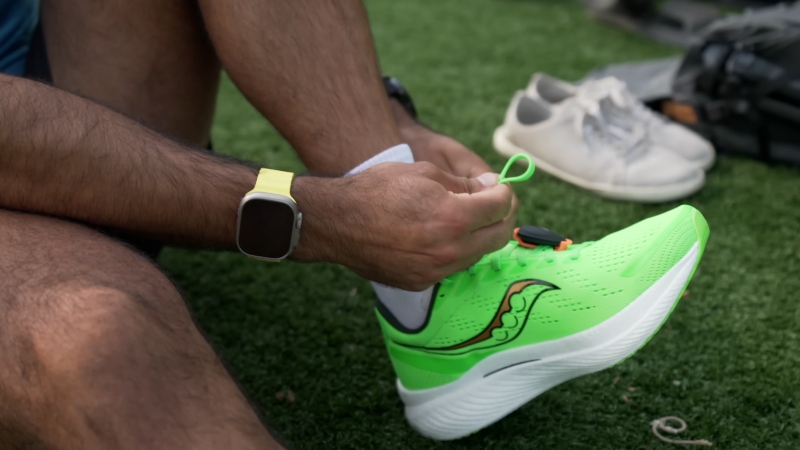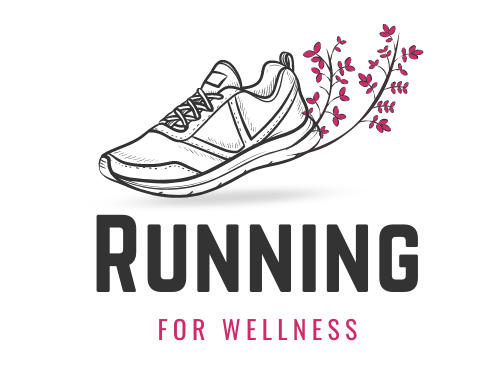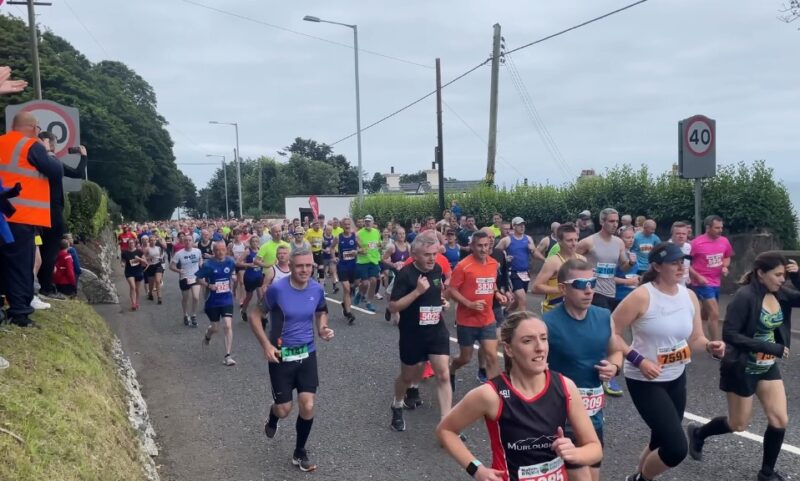If you wonder how far is a half marathon, you’re in the right place. First of all, congratulations on deciding to run it. It’s a big step, but it’s one that countless people take every year, and it’s more achievable than you might think.
A half marathon distance covers 13.1 miles (or about 21.1 kilometers), and while that might sound daunting, with the right preparation, you’ll find yourself crossing that finish line with a sense of pride and accomplishment.
Getting ready for a half marathon isn’t just about putting in the miles. It’s about building a routine that includes running, cross-training, and, importantly, rest.
You’ll need to gradually increase your distance, stay consistent with your workouts, and focus on keeping your body fueled and hydrated.
But it’s not just the physical challenge that makes a half marathon special. There’s something about being out there on race day, with the energy of the crowd and the camaraderie of fellow runners, that turns this into more than just a race.
It’s a personal journey where you push your limits, find out what you’re capable of, and enjoy the support of a community that’s cheering you on every step of the way.
So, if you’re considering taking on a half marathon, know that it’s not just about the 13.1 miles. It’s about setting a goal, working towards it, and experiencing the joy of achieving something truly rewarding.
Table of Contents
ToggleHow Many Miles Is a Half Marathon?
-

Source: YouTube/Screenshot, On average, runners will finish a half marathon in about two hours
Half marathon distance in miles is exactly 13.1 miles or about 21.1 kilometers. This distance is standardized across all official half marathon events worldwide, making it a reliable benchmark for runners. But what does that distance mean?
Running 13.1 miles is no small feat. For many, it’s a significant step up from shorter races like 5Ks or 10Ks.
To put it in perspective, a 5K is 3.1 miles, so a half marathon is more than four times that distance. This requires a different level of endurance, both physically and mentally.
Let’s break it down further. Running a half marathon involves covering about 21 kilometers. On average, most runners take around two hours to complete a half marathon.
The average finish time for all runners is approximately 1 hour and 50 minutes. The pace needed to achieve this is about 8 minutes and 25 seconds per mile.
Calories Burned During a Half Marathon
When running a half marathon, you can expect to burn between 1,200 and 1,800 calories, depending on your pace, weight, and running efficiency. This calorie burn is why nutrition and hydration become critical before, during, and after the race.
Steps Taken During a Half Marathon
On average, a runner will take around 20,000 steps to complete a half marathon. This is more than five times the daily step count recommended for maintaining general health, illustrating the intensity and endurance required.
Comparing the Distance
To give you a more tangible comparison, the distance of a half marathon is roughly equivalent to running around a standard outdoor track 52 times.
Another way to visualize it is by comparing it to well-known distances, such as the Las Vegas Strip, which is 4.2 miles long. Running a half marathon would be like running the entire strip more than three times.
Why 13.1 Miles?
The distance of a half marathon is half of a full marathon, which is 26.2 miles.
The marathon distance itself has historical roots dating back to ancient Greece, but the modern marathon distance was established in the 1908 London Olympics, setting the standard for marathons and, consequently, half marathons.
Start Training for a Half Marathon
Training for a half marathon is a process that requires commitment, planning, and consistency.
Whether you’re a beginner or have some running experience, starting your training with a clear plan is essential to ensure you’re prepared to take on the 13.1 miles.
How Long Does It Take to Train?
The time it takes to train for a half marathon varies depending on your current fitness level and running experience.
For beginners, it typically takes about 12 to 16 weeks of consistent training to be ready for race day.
If you’ve been running regularly or have completed shorter races, you might be able to prepare in 8 to 12 weeks.
Building Your Base
Before diving into more intense training, it’s crucial to build a solid running base. This means getting comfortable with running several miles a few times a week.
If you’re starting from scratch, begin with short runs of 2 to 3 miles and gradually increase your distance.
Aim to run three to four times per week, gradually increasing your weekly mileage by about 10% to avoid injury.
Key Components of a Training Plan
@austinsutcliffe.fitness Looking at your marathon training plan can be intimidating #runtok #runningtok #running #runningtiktok #marathontraining
A well-rounded half-marathon training plan includes several key elements:
1. Long Runs
These are the cornerstones of your training. Long runs, typically done once a week, help build your endurance. Start with a distance that feels challenging but manageable, and gradually increase by a mile or two each week.
By the end of your training, your long run should be close to or equal to the half-marathon distance.
2. Speed Work
Incorporating speed work, such as intervals or tempo runs, can improve your running efficiency and pace. These workouts push you to run faster in short bursts, followed by recovery periods.
Speed work helps you build strength and stamina, making it easier to maintain a steady pace on race day.
3. Cross-Training
-

Source: YouTube/Screenshot, Cross-training is beneficial as it helps improve aerobic fitness
Cross-training includes activities like swimming, cycling, or strength training that complement your running.
These exercises help build overall fitness, prevent injury, and give your running muscles a break while still keeping you active.
4. Rest and Recovery
Rest days are just as important as training days. Your body needs time to recover and adapt to the stresses of training.
Include at least one full rest day per week in your schedule, and consider active recovery days with light activities like walking or yoga.
5. Tapering
As race day approaches, you’ll begin to taper your training. This means reducing your mileage and intensity in the final two to three weeks before the race.
Tapering helps your body recover from the hard training and ensures you’re fresh and ready for race day.
6. Set Realistic Goals
When starting your training, it’s important to set realistic goals based on your current fitness level and experience. For your first half marathon, the primary goal might be simply to finish the race.
As you gain experience, you can set more specific goals, like achieving a certain finish time or running the entire race without walking.
Common Training Mistakes to Avoid
Essential Gear for a Half Marathon
Preparing for a half marathon requires the right gear to ensure comfort, efficiency, and optimal performance. Here’s everything you need to have a successful race day:
1. Running Shoes

Your shoes are the most crucial piece of gear. Be sure to break them in during training to avoid discomfort or blisters on race day.
2. Moisture-Wicking Clothing
Opt for shirts, shorts, and socks made from moisture-wicking fabrics to keep you dry and reduce the risk of chafing. Proper clothing enhances comfort, especially for long-distance runs.
3. High-Quality Running Socks
Invest in well-cushioned running socks that provide support around the heel and toes. Good socks help prevent blisters and ensure better comfort throughout the race.
4. Sports Bra (for Women)
A high-impact sports bra is essential for proper support and comfort. Make sure it fits well and is designed specifically for running to avoid discomfort and irritation.
5. Hydration Gear
Staying hydrated is key during long runs. Consider one of the following options based on your preference:
- Handheld water bottle – Easy to carry but can feel cumbersome.
- Hydration belt – Evenly distributes weight and provides quick access to fluids.
- Hydration vest – Ideal for longer races or training runs requiring more water storage.
6. Running Watch or App

A GPS watch or running app helps track your pace, distance, and time. Monitoring your progress ensures you stay on track with your race strategy.
7. Sun Protection
Protect your skin from prolonged sun exposure with broad-spectrum sunscreen and wear a hat or visor to shield your face.
8. Energy Gels or Chews
For mid-run energy boosts, carry energy gels or chews. Experiment with them during training to find what works best for your stomach and energy needs.
9. Headphones and Music
If you enjoy running with music or podcasts, invest in comfortable, secure-fitting headphones. Be aware of your surroundings, especially in crowded areas, for safety.
10. Foam Roller for Recovery
Post-run recovery is crucial. Using a foam roller helps relieve muscle tightness, reduces soreness, and speeds up recovery after long runs.
Eating and Drinking Right for a Half Marathon
-

Source: YouTube/Screenshot, You should refuel yourself every three miles during the race
Fueling your body properly is crucial when training for a half marathon. Here’s what you need to know about eating and drinking right:
Pre-Run Nutrition
Eat a balanced meal 2-3 hours before your run. Focus on carbs for energy, moderate protein, and avoid too much fat or fiber to prevent stomach issues. Oatmeal, bananas, and toast are good options.
Hydration
Start hydrating well before your run. Drink water consistently throughout the day. During longer runs, consider sports drinks that provide electrolytes to replace what you lose through sweat.
During the Run
For runs longer than an hour, you’ll need to refuel. Energy gels, chews, or even small snacks like raisins can keep your energy levels up. Drink small amounts of water or sports drink every 15-20 minutes.
Post-Run Recovery
After your run, eat within 30 minutes to replenish glycogen stores and kickstart muscle recovery. A combination of carbs and protein, like a smoothie with fruit and yogurt, works well.
Daily Nutrition
During your training period, focus on a balanced diet with plenty of whole grains, lean proteins, healthy fats, and plenty of fruits and vegetables. Avoid empty calories that don’t contribute to your nutritional needs.
Listen to Your Body
Everyone’s nutritional needs are different. Pay attention to how your body responds to different foods and drinks during training, and adjust accordingly.
Potential Challenges During Training
-

Source: YouTube/Screenshot, Running a half-marathon is both a mental and physical challenge
Training for a half marathon isn’t always smooth sailing. Here are some common challenges you might face and how to deal with them:
Injuries
Running injuries can pop up if you push too hard or skip proper warm-ups and cool-downs. Common issues include shin splints, a runner’s knee, and IT band syndrome.
To prevent injuries, stick to the 10% rule (don’t increase your mileage by more than 10% each week), stretch regularly, and listen to your body. If you do get injured, don’t ignore it—rest and seek professional advice if needed.
Lack of Motivation
Some days, getting out the door can be the hardest part. To stay motivated, set small, achievable goals along the way, like hitting a new distance milestone or improving your pace.
Running with a friend or joining a running group can also keep you accountable and make training more enjoyable.
Fatigue
Training can be exhausting, especially when balancing it with work and other responsibilities. Ensure you’re getting enough sleep, eating a balanced diet, and allowing for rest days in your training plan.
If you’re feeling consistently fatigued, it might be a sign to scale back and let your body recover.
Time Management
@trackclubbabe 🚨HOW TO PACE A HALF MARATHON🏃🏻♀️ ⚡️⚡️I believe in learning what the right FEEL is for marathon day & not necessarily be so focused on “pace.” 👉🏽👉🏽HERE’S THE FEEL YOU SHOULD BE LOOKING FOR ON RACE DAY— ✅MILES 1-7 : THE GREEN ZONE ✅13.1 miles is too long to feel like a tempo run from the start. You need to feel somewhat comfortable & steady in the first few miles. ✅You should not be fatiguing with each passing mile just yet. If you are, you need to back off and find that zone that is “steady,” meaning you’re not feeling more fatigued as you go. ✅The fatigue should only slowly start to trickle in around 1/2 way into the race but not sooner than that. ⚠️MILES 7-10 : THE YELLOW ZONE ⚠️Think “just get to 10.” ⚠️You’re starting to feel a little fatigue gradually, but not in the red zone yet. ⚠️Don’t let yourself get caught up in how the pace feels too much, just keep hitting the pace! ⚠️Keep your focus on staying relaxed, & keeping good posture and cadence. 🚨MILES 10-13.1 : THE RED ZONE 🚨Now it’s a 5k race! 🚨Your legs are burning and your whole body is fatiguing. This is where you fight! Embrace the pain & work through it. 🚨Keep focusing on cadence, forward lean, & keeping your upper body relaxed. 🚨Race everyone around you- it’s easier to run fast when you’re focused on latching onto other runners or passing them. With every step you get closer to the finish, so it’s ok that your legs are screaming at you. 🚨Don’t let up & give all you’ve got all the way to the finish! 🗣How do you pace a half?! 🤩We created FAST guides to help you feel strong, fast, & capable of running your best!⚡️ We know that in order to thrive in training, you truly have to love it. So we create programs that help take the pressure off, help you have fun in the workouts, and keep your physical & mental health as the top priority. The icing on the cake is improved running- but really the “cake” is LOVING to run again! #run #howtorun #howtorunfaster #runtok #marathontraining #runnersworld #newrunner #halfmarathon #runfast #marathontiktok #speedworkout #halfmarathontraining
Finding time to train can be tricky, especially with a busy schedule. Plan your runs and treat them like appointments you can’t miss. If necessary, break up your runs into smaller segments throughout the day.
Weather Issues
Weather can be unpredictable, and it might not always be ideal for running. Invest in weather-appropriate gear like moisture-wicking clothing for hot days, and layers of waterproof gear for cold or wet conditions.
If the weather is too extreme, consider switching your outdoor run to a treadmill session.
Plateaus
Sometimes, it feels like no matter how hard you train, you’re not getting faster or stronger. This is normal and usually temporary.
Try mixing up your routine with different types of runs (like hill sprints or interval training) to challenge your body in new ways.
Mental Blocks
Running is as much a mental challenge as it is a physical one. Doubts and negative thoughts can creep in, especially during tough runs.
Practice positive self-talk, visualize your success, and remember why you started this journey in the first place.
FAQ
Last Words
Running a half marathon is a big deal, no doubt about it. But it’s not just about the race itself, it’s about everything that goes into getting ready for it. You’ve got to train smart, eat right, get your gear sorted, and mentally prep yourself for the big day.
Sure, there’ll be challenges along the way, like pushing through tough runs and dealing with the occasional setback, but that’s all part of the journey.
When you finally cross that finish line, it’s not just the 13.1 miles you’ve conquered. It’s the weeks of dedication, the early morning runs, and the discipline you’ve built.
Related Posts:
- Top 400 Hilarious Gym Quotes to Keep You Motivated
- 25 Simple Running Motivation Tips To Get You Moving
- Half Marathon Training Plan for Beginners - Simple…
- 80 Best Motivational Cross Country Running Quotes 2025
- How Long Does It Take to Train for a Half Marathon?
- How Can You Start a Career as a Running Coach?







